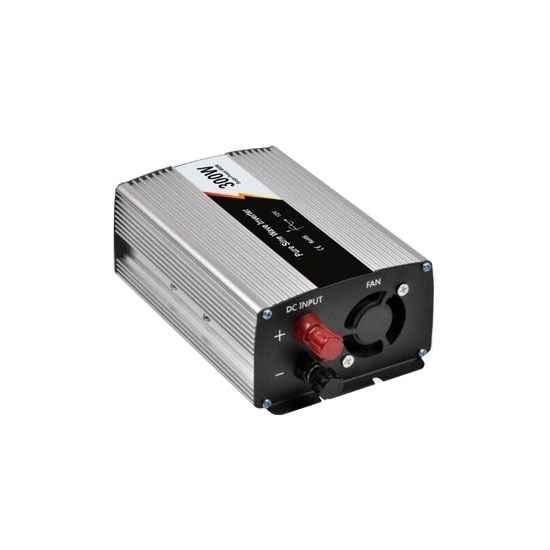
A power inverter is a device that converts low-voltage DC (direct current) power from a battery to standard household AC (alternating current) power. A power inverter allows you to operate electronics, household appliances, tools and other electrical equipment using the power produced by a car, truck or boat battery or renewable energy source, such as solar panels or wind turbines. There’s two types of power inverter – 300W to 6kW pure sine wave power inverter and modified sine wave inverters with 300W to 3000W.
What is a Power Inverter Used For?
Most electronic devices require AC power to work correctly because they are designed to be plugged into a standard wall outlet, which supplies AC power. These devices need a specific amount of low, regulated voltage in order to operate. AC power is easier to step up or down, or change from one voltage to another, than DC and easier to regulate. In many cases, when a power inverter is in use, DC power is being converted to AC power, which is then stepped down and turned back into DC power inside the device.
Simply put, a power inverter delivers AC power when there’s no outlet available or plugging into one is impractical. This could be in a car, truck, motorhome or boat, at a construction site, in an ambulance or EMS vehicle, at a campground or on a mobile medical cart in a hospital. Inverters or inverter/chargers can provide power for your home during an outage to keep refrigerators, freezers and sump pumps operating. Inverters also play an essential part in renewable energy systems.
How does the Inverter Work?
So, how does the power inverter work? The direct current, or DC, power that comes from a battery flows in one direction from the battery’s negative terminal, through the completed circuit and back to the positive terminal of the battery. However, typical 12-volt or 24-volt batteries provide only relatively low-voltage power. Depending on your location, appliances need to run on 120-volt or 230-volt AC power.
An inverter tackles this disparity by increasing the voltage and using transistors or semiconductors to reverse the polarity of the DC input back and forth rapidly, sending it one way through the circuit, then very quickly reversing it and sending it the other way. In most cases, it does this 60 times per second (60 Hz).
